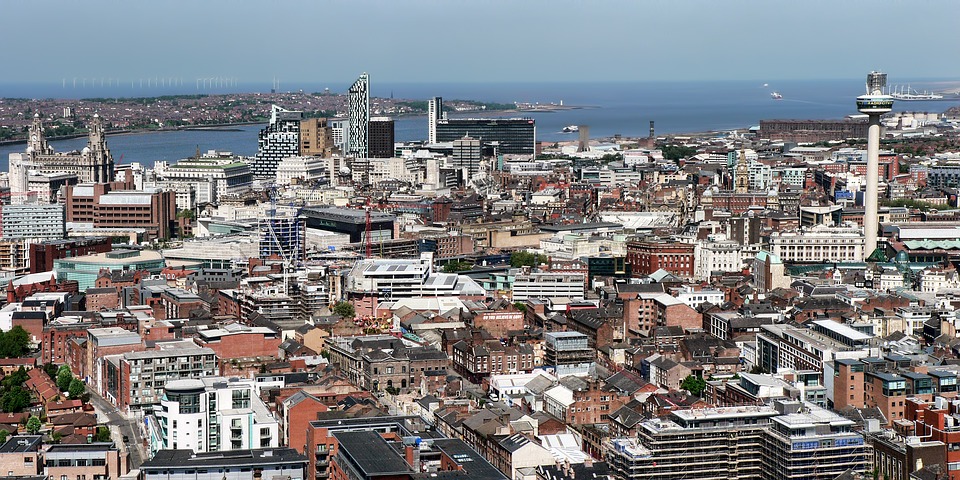Interview with Mark Kitts, Assistant Director Regeneration at Liverpool City Council
In the last few years there has been considerable attention on Liverpool’s new architecture and urban development, from Liverpool One to the Waterfront area including the Mann Island, the Liverpool Museum by 3XN and this summer the new RIBA North. Could you clarify which city plans have been driving these changes?
The City Council, Liverpool Vision (the City’s Investment Agency at that time) and its partners produced a Strategic Investment Framework for the whole of Liverpool City Centre back in 2012. This document formed the basis for investment, planning and development activities across a variety of City Centre neighbourhoods or Districts including the Waterfront, the Commercial District, the main Retail Area, the Cultural Quarter amongst others. The SIF as it is called is still referred to today as it forms a material consideration from a planning perspective as well as providing a blueprint for the ambition of the City from an investment perspective.
—
Regarding the number of theatre interventions; The Royal Court, The Everyman and the Philharmonic, were they conceived as private projects or are they part of a wider cultural plan?
There are several Theatres in Liverpool in addition to the Royal Court and Everyman, such as the Empire, the Epstein and the Playhouse. Apart from the Playhouse and Everyman which are managed together by Liverpool and Merseyside Theatres Trust, they are in fact independent of one another. They don’t operate strategically as such as they are businesses in their own right however they do form a very important part of the Liverpool ‘offer’ important to us in attracting not only tourists but new business and residents to Liverpool. Through the City’s Cultural Partnership and Visitor Economy Networks the Theatres are represented as key stakeholders and are seen as key contributors to the success of the City moving forward.
—
Could you tell us more about the focus and guidelines of the proposed new city plan?
The City’s new Local Plan is for the whole of Liverpool, not just the Centre. It is a Government requirement as it is for all All Authorities across the Country. When complete in 2018 it will replace the current citywide plan that dates back to 2002. Its purpose is to guide plans for the city’s future in terms of land use for residential, employment, retail, open space, green space and others. It will also take into account and highlight existing and newly proposed regeneration programmes and projects as well as highways and infrastructural issues. It has to take into account Government forecasts such as population growth, housing growth, employment growth. It has to be an inclusive document and will have been through a number of consultation rounds with residents, businesses, local groups and organisations and development companies. Government will determine in 2018 the ratification of the City’s Local Plan.
—
What is the view for the future of the waterfront and the industrial area of Bootle to the north of the city?
Whilst Bootle sits outside of the Municipal boundary of Liverpool City Council it is a close neighbour sitting with Sefton Municipality. Liverpool and Sefton work closely together on a number of plans and strategies for the area including strategies for the Port, strategies for major highways and infrastructure projects that go across both municipalities. Along Liverpool’s northern waterfront area the strategy for regeneration is mainly focussed around two key projects; Liverpool Waters, a project with one landowner (Peel Holdings) which includes amongst other things up to 9000 new apartment type homes, 1 Million square foot of commercial business space, the home for the Councils proposed new Cruise Terminal and a proposed new stadium for Everton Football Club. The second strategy is ‘Ten Streets’ which neighbours Liverpool Waters and attempts in the long term to encourage employment based end uses focussed on Creative businesses.
—
What is your view regarding the new towers on the waterfront and the Word Heritage Committee comments?
Back in 2012 Peel secured Planning permission for Liverpool Waters (as described above) which included a cluster of tall buildings at its centre. Although the tall building are simply plans they have caused a stir with the World Heritage Committee who believe that, if built, they will undermine the Outstanding Universal value of the whole World Heritage Site. In reality the tall buildings are unlikely to be built to the heights approved, nor in our view would any building in this location harm the OUV. Regeneration Investment and Jobs is important to Liverpool just as its heritage. The Mayor of Liverpool has recently asked for an independent Task Force to be created to look at this issue to see if we can achieve both economic growth and the retention of our World Heritage Site status.
—
Immagine principale: Haworth Tompkins, Everyman Theatre
About Author
Tag
Liverpool , rigenerazione urbana , ritratti di città
Last modified: 19 Giugno 2019

























